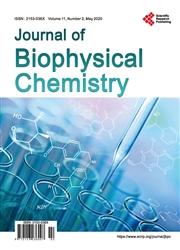Mitochondrial Respiration Is Associated with Alloxan-Induced Mitochondrial Permeability Transition
引用次数: 0
Abstract
We previously showed that increased mitochondrial inner membrane permeability which is known as mitochondrial permeability transition (MPT) is triggered by adding succinate in the presence of the diabetogenic agent alloxan. Here, our aim was to investigate whether mitochondrial respiration is associated with alloxan-induced MPT. After mitochondria isolated from rat liver were incubated with alloxan at 37°C for 5 min, the addition of succinate immediately triggered the MPT in the presence of rotenone. However, little or no induction occurred at incubation temperatures below 25°C. Malate/glutamate also triggered MPT by alloxan in the absence of rotenone. In mitochondrial suspensions containing alloxan, succinate accelerated oxygen consumption that was completely inhibited by cyanide. These results suggest that mitochondrial respiration is associated with the alloxan-induced MPT. Alloxan radical production was investigated using ESR spectroscopy. Mitochondria incubated with succinate and alloxan elicited low signal intensity (radical formation) that increased significantly in the presence of cyanide. When the incubation of alloxan with mitochondria after the addition of succinate, a little intensity of the signal was observed, but it was remarkably increased after the addition of cyanide. Ubiquinone analogues inhibited the MPT induction. These results suggest that the initiation of MPT is associated with alloxan redox cycling via an electron transfer process at a quinone-binding site in respiratory mitochondria.线粒体呼吸与四氧嘧啶诱导的线粒体通透性转变有关
我们之前的研究表明,线粒体内膜通透性的增加被称为线粒体通透性过渡(MPT),是通过在致糖尿病剂四氧嘧啶的存在下添加琥珀酸盐触发的。在这里,我们的目的是研究线粒体呼吸是否与四氧嘧啶诱导的MPT有关。从大鼠肝脏分离的线粒体与四氧嘧啶在37℃下孵育5分钟后,在鱼藤酮存在的情况下,加入琥珀酸盐立即触发MPT。然而,在低于25°C的孵育温度下,很少或没有发生诱导。在没有鱼藤酮的情况下,苹果酸/谷氨酸也会通过四氧嘧啶触发MPT。在含四氧嘧啶的线粒体悬浮液中,琥珀酸盐加速了被氰化物完全抑制的氧气消耗。这些结果表明线粒体呼吸与四氧嘧啶诱导的MPT有关。用ESR光谱法研究了四氧嘧啶自由基的产生。与琥珀酸盐和四氧嘧啶孵育的线粒体引起低信号强度(自由基形成),在氰化物存在下显著增加。加入琥珀酸盐后四氧嘧啶与线粒体孵育时,信号强度较小,但加入氰化物后信号强度显著增加。泛醌类似物抑制MPT诱导。这些结果表明,MPT的启动与呼吸线粒体醌结合位点的电子转移过程中的四氧嘧啶氧化还原循环有关。
本文章由计算机程序翻译,如有差异,请以英文原文为准。
求助全文
约1分钟内获得全文
求助全文

 求助内容:
求助内容: 应助结果提醒方式:
应助结果提醒方式:


